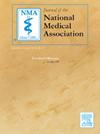A critical awareness approach to cluster hiring for academic inclusion
IF 2.5
4区 医学
Q1 MEDICINE, GENERAL & INTERNAL
引用次数: 0
Abstract
Minoritized groups experience interpersonal, structural, and systemic marginalization that is also perpetuated within academic institutions. This marginalization produces barriers that exclude racial/ethnic minoritized groups within academic medicine from career opportunities and advancement. Racial/ethnic minoritized faculty are often expected to take on additional labor to serve the diversity needs of the program and/or institution that are often unrecognized or undervalued in the tenure or promotion process or detract from additional responsibilities. The unique needs resulting from multiple intersecting identities must be considered when planning initiatives to support minoritized groups in academia. This is detrimental to medicine as it limits innovation, perpetuates health disparities, and prevents the recruitment of scholars/physicians that are representative of the diversity within the U.S. population. Cluster hiring is a newer initiative adopted by many institutions; recently supported by funding from the National Institutes of Health (NIH) to improve diversity and inclusion of racial/ethnic minoritized groups. Here we discuss the elements of the cluster hire process and how they might be particularly relevant to intersectional inclusion and structural change of academic institutions, while also highlighting potential limitations to broad adoption. We conclude with recommendations for the potential need for integration of more culturally informed cluster hiring practices that can be made at the departmental, institutional and national level to positively impact the hiring, retention and advancement of faculty from marginalized populations.
一个关键的意识方法集群招聘学术包容。
少数群体经历了人际、结构和系统的边缘化,这种边缘化在学术机构中也长期存在。这种边缘化产生了障碍,将学术医学中的种族/少数民族群体排除在职业机会和晋升之外。种族/少数民族的教师通常被期望承担额外的劳动,以满足项目和/或机构的多样性需求,这些工作在任期或晋升过程中往往不被认可或低估,或者减值了额外的责任。在规划支持学术界少数群体的举措时,必须考虑到多重交叉身份所产生的独特需求。这对医学是有害的,因为它限制了创新,延续了健康差距,并阻止了学者/医生的招聘,这些学者/医生代表了美国人口的多样性。集群招聘是许多机构采用的新举措;最近得到了美国国立卫生研究院(NIH)的资助,以改善种族/少数民族群体的多样性和包容性。在这里,我们讨论集群招聘过程的要素,以及它们如何与学术机构的交叉包容和结构变化特别相关,同时也强调了广泛采用的潜在限制。最后,我们提出了在部门、机构和国家层面整合更具文化信息的集群招聘实践的潜在需求,以积极影响来自边缘人群的教师的招聘、保留和晋升。
本文章由计算机程序翻译,如有差异,请以英文原文为准。
求助全文
约1分钟内获得全文
求助全文
来源期刊
CiteScore
4.80
自引率
3.00%
发文量
139
审稿时长
98 days
期刊介绍:
Journal of the National Medical Association, the official journal of the National Medical Association, is a peer-reviewed publication whose purpose is to address medical care disparities of persons of African descent.
The Journal of the National Medical Association is focused on specialized clinical research activities related to the health problems of African Americans and other minority groups. Special emphasis is placed on the application of medical science to improve the healthcare of underserved populations both in the United States and abroad. The Journal has the following objectives: (1) to expand the base of original peer-reviewed literature and the quality of that research on the topic of minority health; (2) to provide greater dissemination of this research; (3) to offer appropriate and timely recognition of the significant contributions of physicians who serve these populations; and (4) to promote engagement by member and non-member physicians in the overall goals and objectives of the National Medical Association.

 求助内容:
求助内容: 应助结果提醒方式:
应助结果提醒方式:


